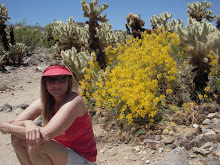

Have you ever traveled to a place that once you've arrived, you never wanted to leave? I feel that way about Joshua Tree National Park. There are the unusual rock formations that attract world class climbers, the roadrunners and golden eagles, coyotes and Bighorn sheep, the searing blue sky and twisted Joshua trees that only grow at an elevation of 2,000-6,000 feet.
Northeast of Palm Springs, just south of Twentynine Palms, Joshua Tree National Park has a long, rich history. Chemehuevi and Serrano Indians inhabited this part of the high desert for thousands of years, making camp at the Oasis of Mara ("land of little water"), home of the 29 palms. In the 1800s, cowboys drove cattle through the nearby grasslands. After, gold miners seeking their fortune staked thousands of claims. In the 1920s, the U.S. government offered 160-acre homestead lots to families who built a house on the site and lived in it nine months out of the year.
During the 1930s, Minerva Hoyt, a community activist from Pasadena, also an avid gardener, became alarmed by the destruction of the desert plant life. Mrs. Hoyt, nicknamed "Apostle of the Cactus," lobbied President Franklin D. Rooselvelt, who created Joshua Tree National Monument in 1936. In 1994, the Monument became a national park.
Located where the Colorado and Mojave deserts meet, Joshua Tree National Park sprawls over 1,240 square miles of mountains, valleys, and flatland. Artists paint and photograph the landscape. Hikers, bird-watchers, and nature-lovers stroll and scramble over boulders. My family and I name the giant rocks that look like elephants or whales. The park's other-worldly feel, with its Joshua tree forests, inspired U-2 when Bono and the band members traveled the California deserts to shoot the cover of the award-winning album, The Joshua Tree.
Visit Joshua Tree National Park several months after a heavy rain, and see the abundance of desert flowers.
More desert trivia:The Joshua tree is not really a tree, but a yucca brevifolia, a member of the lily family.
(photos: Joshua Tree National Park 2,000)





No comments:
Post a Comment